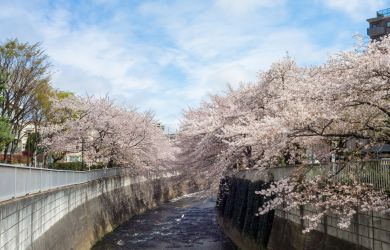
March 17, 2011
Nature Film Network
A local NPO offers a visual diary of our changing planet
By Metropolis
Originally published on metropolis.co.jp on March 2011

Courtesy of Green/Tawak Pictures (France)
In a sprawling city like Tokyo, the only wildlife residents get to see on a regular basis are the gargantuan crows trying to make off with our garbage, or maybe the occasional cockroach. It’s easy to feel disconnected to the natural world—not just in the spiritual sense, but also in terms of how we impact it.
That’s one of the reasons Tokyo-based NPO Nature Film Network has been working for almost two decades to promote movies as a way of fostering public enthusiasm and appreciation for nature.
“Wildlife films have the power to show us what is actually happening on our planet,” says Mie Kuribayashi, NFN’s manager of international relations. “We feel the importance to convey [these changes] to people, especially people living in the city, because the benefits of our life are founded on the sacrifices of the Earth. For example, not many people are aware in our daily life that our foods, such as chocolates and cup noodles, which contain palm oil, are causing the deforestation in Indonesia and extinction of the orangutan.”
Part of the group’s public outreach consists of hosting free bimonthly screenings at its mini-theater in Kagurazaka. Feature films from all over the world are shown, though NFN has a particular focus on Asian issues. Recent screenings have included a Korean film about the increase in the jellyfish population due to rising ocean temperatures and a British film about the plight of the endangered Asian snow leopard.
NFN’s biggest event, though, is the Japan Wildlife Film Festival, held every other August in Toyama. It’s one of the biggest fests of its kind in Asia—the 2009 edition garnered 347 entries from 42 countries and 30,000 visitors. In addition to screenings, there are seminars by scientists and filmmakers that offer networking opportunities and give the public a chance to hear first-person accounts of filming and research.
The festival also offers a chance for new or hobby filmmakers to get exposure for their work. Ai Nihongi, the winner of the Asia-Oceania Newcomer Award in 2007, was a biologist researching zooplankton. “She started filmmaking in her laboratory with a microscopic camera [and] did the filming, editing and recording of the narration all by herself,” says Kuribayashi. “She told me that she recorded the narration in her closet!” Nihongi has since done films for national museums and the BBC.
At the 2009 festival, Patrick Rouxel entered a movie shot on a camcorder while in Indonesia on a tourist visa. It documented the massive deforestation there and its deadly effects on an orangutan named Green (pictured). The film, which shares the same name, won the Message Prize at the JWFF, going on to take best of show at both Wildscreen and the Jackson Hole Wildlife Film Festival. As part of his efforts to raise consciousness about the issue, Rouxel streams the movie on the web free of charge.
“Sadly, we receive more and more film entries which show us the crisis of Earth these days,” Kuribayashi says, reflecting on JWFF’s role in awareness-raising. “Through wildlife films, even little kids can see how we are connected to the Earth and that we urgently need to think about alternative ways. Awareness is the first step.”
• Nature Film Network screenings take place at 6:30pm on the first and third Mondays of each month. Seating is on a first-come, first-served basis. 11-1 Akagishitamachi, Shinjuku-ku. Nearest stn: Kagurazaka.
• The Japan Wildlife Film Festival takes place August 4-7. To find out more about Nature Film Network or the Japan Wildlife Film Festival, see www.naturechannel.jp.







